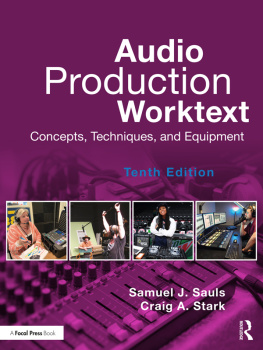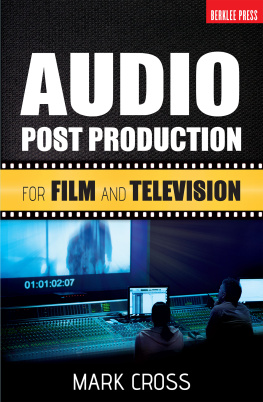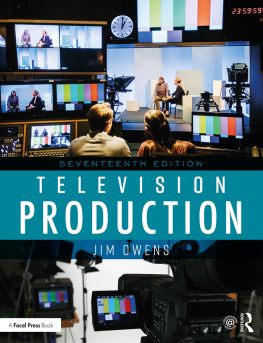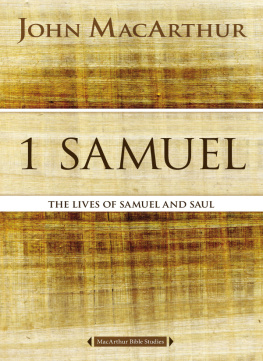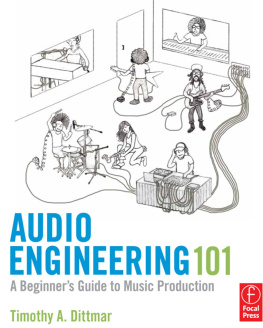ACKNOWLEDGMENTS
We continue to be indebted to our colleagues at Susquehanna University for their continued support in our endeavor. Many of our friends in broadcasting, education, and related audio production industries provided us with valuable insight and real-world experiences, which help to make the tenth edition of the Audio Production Worktextone of the best audio production books available:
- Fred Ginsburg, CAS
- Andrew Emge, Pro Sound Effects
- Valerie Geller
- Hctor Brown, Broadcast Electronics
- Kimberly Parra, Denecke, Inc.
- Nick Stillman, RDE Microphones/Freedman Electronics
- Ken Pyatt, SKY Helicopters, Inc.
- Elizabeth Wadium, Sound Devices, LLC
- Dawn Marie Benfer, 88.9 WQSU-FM The Pulse, Selinsgrove, PA
- Steffen W. Schilke
- Peter Baker, Audio-Technica US, Inc.
- David Via, Zoom North America
- Edward Dishman, Ned Dishman Photography
- Nicole DJ Heat Mosley, Washington Mystics and Washington Wizards
We offer special gratitude to Michael Saffran, SUNY Geneseo, the final manuscript reviewer who provided thorough input for this edition.
We would also like to thank Priscille Biehlmann, Editorial Assistant Journalism and Media Studies at Routledge, Taylor & Francis Group, Oxfordshire, UK, and all of our friends at Routledge for their guidance through the publication of this edition of the Audio Production Worktext.
We are grateful to Alf Symons, Deputy Production Editorial Manager, History, US Media and Research at Taylor & Francis Group in the UK and Christopher Mathews, Project Manager at Apex CoVantage for their expertise in the final publication process.
We look forward to working with everyone at Routledge in the years to come.
APPENDIXANALOG AND ORIGINAL DIGITAL AUDIO EQUIPMENT
A.1INTRODUCTION
Analogtechnology was used in audio production for almost a century. Most analog technology has been replaced by digitalequipment, although even some forms of digital production equipment seem antiquated today. Most analog equipment, as well as some digital equipment, has lost much of its importance, and as such has been relegated to the appendix. It is unlikely that you will ever work in an analog-dominated environment, but many facilities still use analog equipment for specialized purposes. In this appendix, we will discuss several of these pieces of equipment, and give you the information you will need to know if you ever operate it.
Microphones and speakers will not be discussed in this appendix. Although each can contain digital elements, they are still basically analog and probably always will be. The human voice box and the human ear operate in an analog fashion, and, barring some major genetic breakthrough, people are not going to spew forth 0s and 1s from their mouths or hear them with their ears. At the beginning and end of the audio process, analog will remain with us. Therefore, what was discussed in Chapters 4 and 7 about microphones and speakers is still relevant in covering the analog aspects of these pieces of equipment.
As technology has changed, some forms of digital audio equipment are not used as often as they used to be and, as such, have become outdated. Distribution and storage methods rely more on the internet and less on physical media these days, and, as a result, the use of technologies such as compact discs, MiniDiscs, and digital audio tape is dwindling. You may find, however, that some radio stations and production facilities still rely on these forms of digital media, so it is still a good idea to be familiar with them.
Even if you have no contact with the analog equipment discussed in this appendix, you may well find it interesting. Knowledge of the historical background is always advantageous. Some of the capabilities and quirks of modern digital equipment are there because people wanted to keep the best of the analog characteristics, as well as making it easy for people who were experienced in analog to make the transition to digital. You may wind up marveling at what audio practitioners were able to do in the past, given some of the limitations of the equipment.
A.2TURNTABLES
The turntable(see ) was the first piece of analog equipment to succumb to digital technology when the compact disc (CD)player became popular in the early 1980s. Because a turntable cannot record, its functions relate only to playing back sound material. The two basic functions are to spin a record at the precise speed at which it was originally recorded, and to convert the variations in the grooves of the record into electrical energy.

